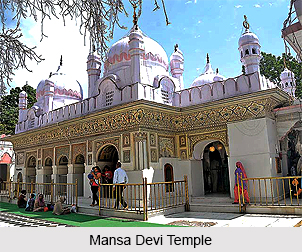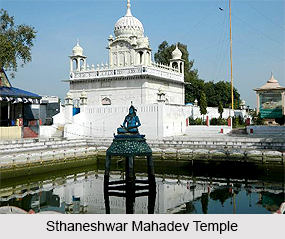 Sculptures in Haryana were concentrated around central and northern parts and were basically religious in content. The beauty of Haryana gets accentuated because of the presence of the enamouring temple sculpture of Haryana. The civilisation of Haryana dates back to the days of Indus Valley Civilisation. As a result in the Indian Territory, the state of Haryana forms an integral part. In fact it is the cradle of Indian legends and religion is integrally related to its identity. There are notable Hindu temples here that have been built by following the Nagara style.
Sculptures in Haryana were concentrated around central and northern parts and were basically religious in content. The beauty of Haryana gets accentuated because of the presence of the enamouring temple sculpture of Haryana. The civilisation of Haryana dates back to the days of Indus Valley Civilisation. As a result in the Indian Territory, the state of Haryana forms an integral part. In fact it is the cradle of Indian legends and religion is integrally related to its identity. There are notable Hindu temples here that have been built by following the Nagara style.
Examples of Sculptures of Haryana
One of the best known temple sculptures in Haryana is the sculpture of Mansa Devi Temple at Panchkula. As one moves towards North India one of the recurrent features here are the temples dedicated to Mother Goddesses. Some of the most well carved temples have Goddess Durga, Parvati and other female deities as the primary idols. The temples of Haryana have been carved out of stone. The regular architectural elements of these temples are the "Shikhara", pillars and the inner sanctums. The Shikhara or the towers is often designed with sculptures.

The other temple sculpture of Haryana which inevitably attract tourists is the sculpture of Sthaneshwar Mahadev Temple, Kurukshetra. Kurukshetra has always been hailed as one of the main pilgrimage centres in India. Hence the temple located here is often visited. The sculpture and the architecture of the temple are in accordance with its region. The basic architectural elements include the dome shaped Shikhara, an inner sanctum and others.
Main Themes of Sculptures of Haryana
The mixture of incarnations of Lord Vishnu along with other Hindu gods and goddesses provided the inspiration to sculptors to carve out beautiful images. Besides characters from Hindu mythology, Jain images from the Pratihara period of the 9th century have also been found. All the sculptures are made of sandstone. A figure of Vishnu found in Kurukshetra is an extraordinary piece of art, showing the four- armed God, stylishly reclining on the coils of Anantnag, the many-headed snake. This stone figure was possibly made in the 10th century AD.
The other temple sculptures of Haryana include the following:
•Sculpture of Birla Mandir, Chandigarh
•Sculpture of Sheetala Devi Temple, Gurgaon
•Sculpture of Shiva Temple, Mahendra Garh
•Sculpture of Sita Mai Temple, Karnal



















